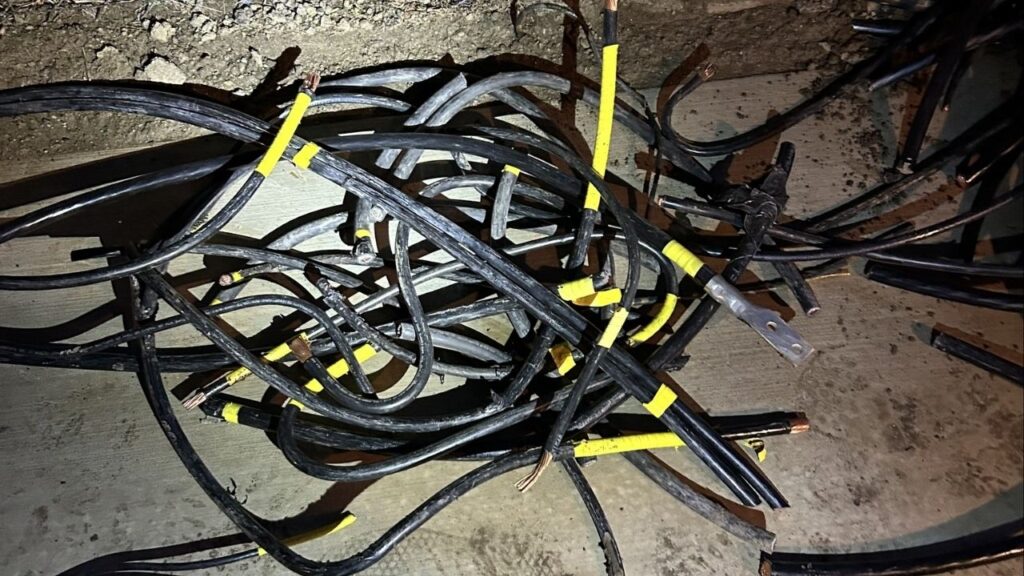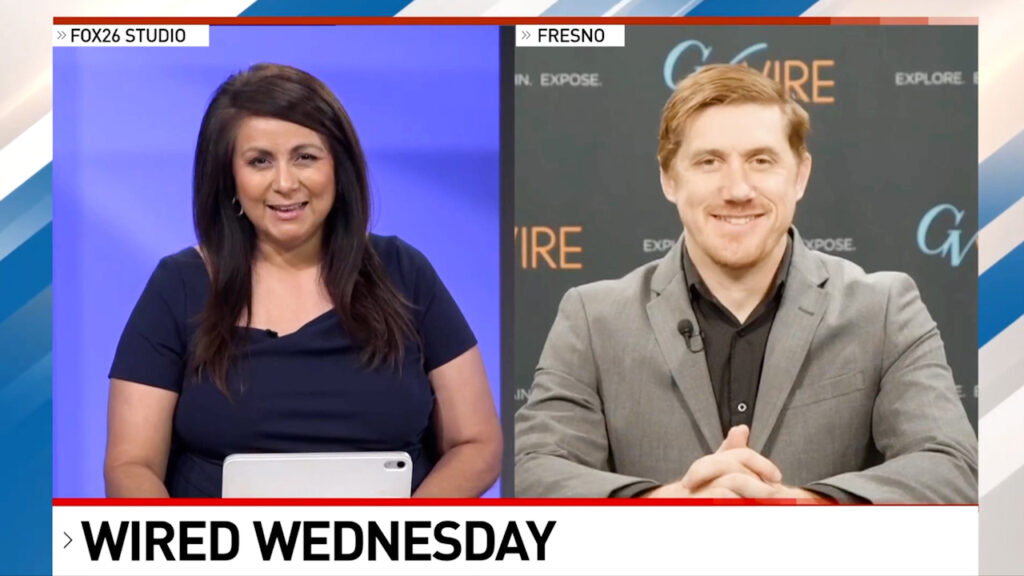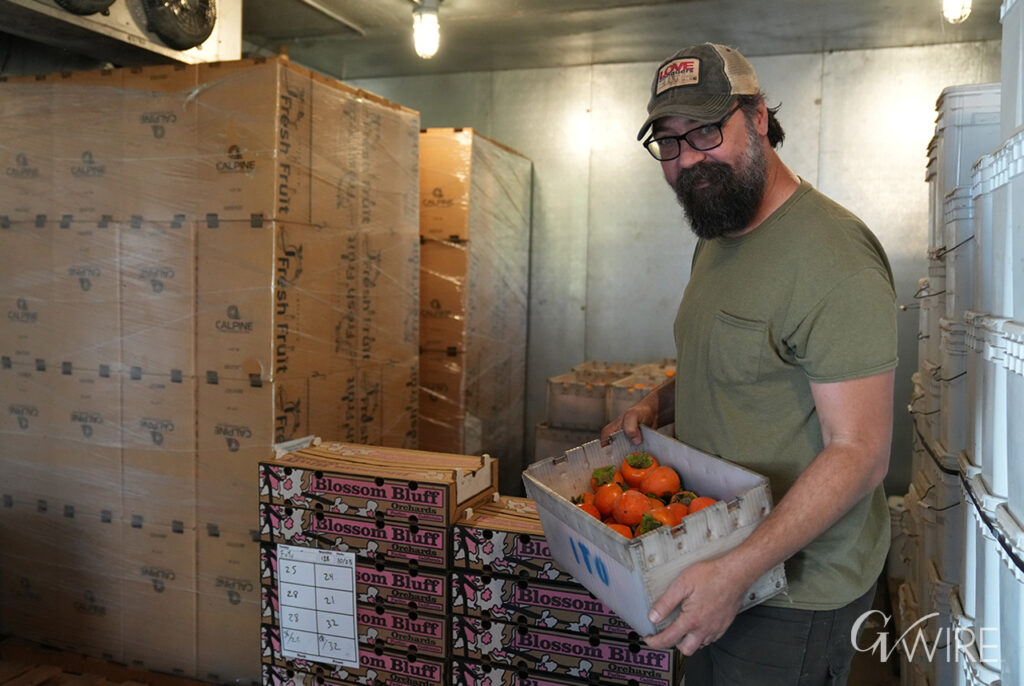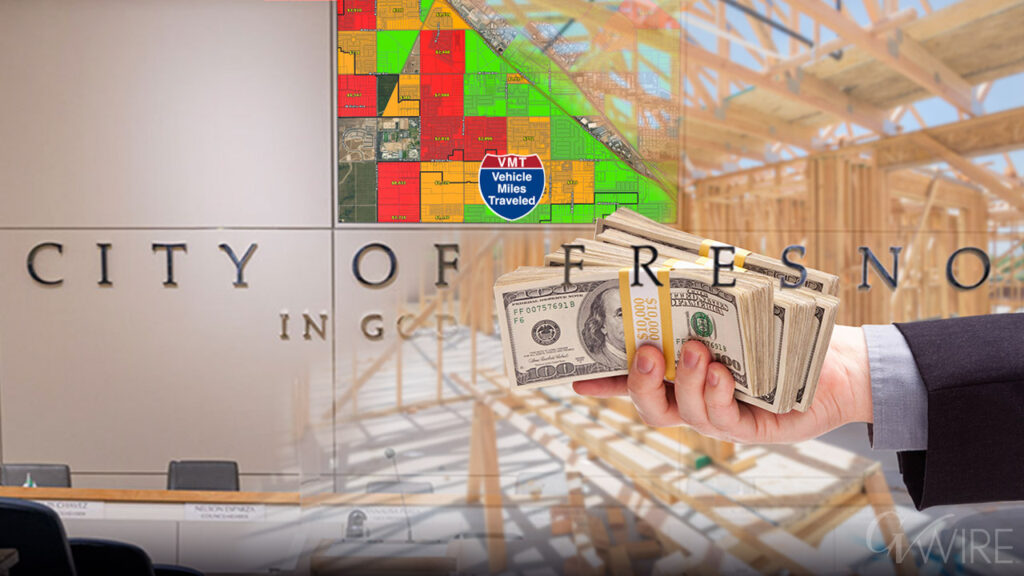People dine at a cafe, in Venice, Calif. on Tuesday, Jan. 14, 2025. While many Angelenos have been devastated by the fires, others in the sprawling city have had to balance helping out with “normal life.” (Kyle Grillot/The New York Time)

- The fires have destroyed 12,000 structures, with insured losses estimated at $30 billion.
- Long-term health effects from smoke and stress are expected to impact the region for years.
- Experts suggest rebuilding with a focus on affordability and fire-resistant community design.
Share
|
Getting your Trinity Audio player ready...
|
After decades of mounting damage from climate-fueled natural disasters, researchers have compiled many misery-filled data sets that trace the economic fallout over weeks, months and years.
The fires still burning in Los Angeles are sure to rank among America’s most expensive — but there is no perfect analogue for them, making it difficult to forecast the ultimate cost.
The main reason is that wildfires have typically burned in more rural locations, consuming fewer structures and attacking smaller metropolitan areas. The Los Angeles conflagration is more akin to a storm that hits a major coastal city, like Houston or New Orleans, causing major disruption for millions of people and businesses.
“It looks a lot more like the humanitarian situation from a flood or a hurricane than a wildfire that people are watching in the hills,” said Amir Jina, an assistant professor at the University of Chicago’s Harris School of Public Policy, who has studied the economic impact of climate change.
On the other hand, several mitigating factors could lead to lower costs and a stronger rebound relative to other places. The cinema capital’s wealth and industrial diversity, along with other natural advantages from geography and weather, may allow Los Angeles to stave off a worst-case scenario.
Estimating the likely economic losses is tricky at this stage. The weather data company AccuWeather has offered a figure of $250 billion to $275 billion, though a Goldman Sachs report said it found the estimate high. (Declining to provide a breakdown because its methodology is “proprietary,” AccuWeather said it considered many factors including long-run health impacts as well as short-term losses in the value of public companies exposed to the disaster.)
Here are some elements to account for when thinking about the total cost of the fires.
Related Story: Gov. Newsom, Mayor Bass Targeted in Wildfire Witch Hunt
Physical Wreckage
The most straightforward component of damage is the number of structures damaged or destroyed, currently about 12,000. That’s fewer than the 18,000 felled by the Camp fire in Northern California in 2018, but this is a different kind of house: Zillow values the average home in the Pacific Palisades ZIP code at $3.4 million; in Altadena’s ZIP code, it’s $1.3 million.
That’s what is driving early estimates of insured losses progressively higher, now reaching $30 billion, according to Wells Fargo. But insurance will neither make all homeowners whole nor pay the full cost of rebuilding. Carriers have dropped thousands of policies in the affected areas in recent years, and the state-backed insurer of last resort caps coverage at $3 million per residential property.
Then there’s the damage to commercial space. Although one landlord managed to protect an outdoor mall with privately hired water tankers, many other businesses were gutted.
These neighborhoods may be better able to recover than others hit by wildfire in recent years. The median annual household income in Pacific Palisades, for example, is more than $200,000, compared with about $80,000 nationally; in Altadena, it’s $134,000.
Nonetheless, public funding will be needed to repair and reconstruct sewer systems, power lines and roads. Water infrastructure requires particular attention, since ash and contaminants can pollute drinking water far outside the burned areas.
“I’m not sure there’s enough money to go around,” said Margaret Walls, director of the Climate Risks and Resilience Program at Resources for the Future, an environmental think tank. “Communities haven’t figured out how to pay for this.”
Related Story: How Much Did Beyoncé Donate to LA Wildfire Relief?
Work Not Getting Done
Wildfires and hurricanes can have short- and long-term effects on employment and productivity. People who have evacuated may be unable to work, and the jobs based in the affected areas — such as landscaping, teaching school and providing health care — at least temporarily disappear.
Early data is trickling in. The fires haven’t hit major employment centers or industrial facilities, but the number of total hours worked in Malibu and Pacific Palisades declined 57% the week the fires started relative to the prior week, according to Homebase, an operations platform for small businesses.
Analysts at Goldman Sachs forecast that the fires would knock 15,000 to 25,000 positions off the Labor Department’s employment report for January. That’s less than the hit from last summer’s major hurricanes, after which people quickly returned to work.
But the damage doesn’t end there. A study published this month in The Journal of Environmental Economics and Management found that large fires depress job creation in the affected counties. The effects rise with the share of the county’s landmass that burned, and Los Angeles County is nearing the upper end of the scale.
According to one of the authors, Raphaelle Gauvin-Coulombe, an assistant professor of economics at Middlebury College, a fire of this magnitude on average reduces monthly employment growth by 1.46 percentage points over three years. Los Angeles has a relatively varied industrial base, including manufacturing, higher education and technology along with entertainment, which could help it recover faster. On the other hand, it relies much more than the typical county on leisure and hospitality enterprises, which are extremely vulnerable to fire.
“If you rely a lot on visitors for your economy, the reduction in consumer demand will be especially important for the region,” Gauvin-Coulombe said.
The study also found that a federal disaster declaration could substantially cushion those negative impacts by pumping billions of dollars into the community. That often leads to an increase in local economic output after disasters, despite the devastation.
Related Story: LA Wildfires Death Toll Rises to 16 as Crews Fight Heavy Winds
Long-Term Health Effects
The most immediate, concrete impact of the fires on human health is the body count: So far, 25 people are known to have died, with the tally likely to rise.
But that’s only the beginning. Wildfire smoke has a range of ill effects, including asthma, cancer and preterm births, with children and those with respiratory conditions most at risk. The particular poisons lofted into the air when houses and their contents burn, rather than just vegetation, could create even more complications.
Rising Cost of Living
California is an expensive place to live, and the fires are likely to supercharge that problem in the Los Angeles area, at least in the short term, as people displaced from the fires seek new places to live.
“I would look for rents to go up basically immediately,” said Jeff Bellisario, executive director of the Bay Area Council Economic Institute. “We have very few vacant rental homes, so there’s no real cushion within our housing market.”
At the same time, an even more fundamental threat is growing: the rising cost of property insurance, which was already prohibitively expensive in many areas of California. When policies become unaffordable or unavailable, real estate starts to lose value, which can drain the wealth of families whose main financial asset is home equity.
Experts say the way to keep areas insurable is to make not just individual buildings, but whole communities less flammable. That means retrofitting roofs and siding, adding sprinkler systems, clearing vegetation and undertaking a host of other measures that cost money and require constant vigilance.
Possible Paths Forward
To a large degree, Los Angeles’ recovery — and the distribution of harms and benefits — depends on policymakers.
With little intervention, wealthy individuals could assemble burned lots to build even larger estates in the still-breathtaking coastal locale. Private equity companies could buy up land at vastly reduced prices and wait for conditions to be ripe for rebuilding.
Alternatively, local government officials could encourage a pattern of reconstruction that eases the city’s affordability problem. Turning some land back into open space while rezoning to build more units on less acreage would bolster the housing supply while allowing communities to be defended more easily.
“From a housing economist’s perspective, if we have opportunities to build in a more dense multifamily way, we should,” Bellisario said. “The ‘but’ is, we know we’re in a wildfire damage zone — can you do it in a way that can be made safe and insurable and also house more people than maybe we did before?”
Adding more housing is probably necessary to stem the flow of people already moving out of California. Places hit by fire tend to lose population and not recover.
The good news is, retrofitting existing homes can be relatively affordable, and new communities built from scratch even more so, according to a study by the research group Headwaters Economics.
With large-scale disasters becoming more frequent, “we do not want to get to the point of normalizing it,” said Kimiko Barrett, an analyst with the firm. “We do know how to build things safer and smarter for this increasing reality we’re looking at.”
—
This article originally appeared in The New York Times.
By Lydia DePillis/Kyle Grillot
c.2025 The New York Times Company



















